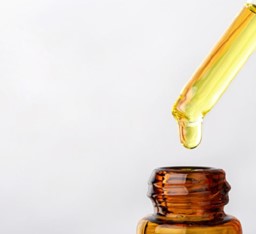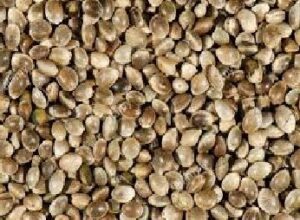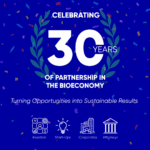Industrial Hemp Production: Cultivation and Management
By: Susan P. Rupp, PhD ( LEC Partners
The production of industrial hemp, grown for fiber, seed, and cannabidiol (CBD), has surged in recent years. More recently, the Agriculture Improvement Act of 2018 (2018 Farm Bill) authorized the production of hemp and removed hemp and hemp seeds from the Drug Enforcement Administration’s (DEA) schedule of Controlled Substances. However, producers continue to face challenges in production and marketing of products because of constantly morphing state and federal regulations, typically revolving around total tetrahydrocannabinol (THC) levels within the plant, that affect both how crops are grown as well as the ability to harvest, sell, and process those products. THC is the main psychoactive compound that gives marijuana users their “high.” While marijuana cultivars typically contain 3% to 15% THC by weight, hemp cultivars are bred to contain only trace amounts (less than or equal to 0.3%).
In addition to consumptive uses, alternative markets are also being explored. Hemp has been researched as a potential tool for phytoremediation and for potential biomass and energy production as both a biogas and solid fuel. Hemp fiber is being used for everything from plastic composites to car insulation. There have also been numerous studies on fiber quality, harvest times, flowering dates, and other basic production information. Therefore, it is important for growers to focus on what they want to cultivate most (fiber, grain, or flower), find the cultivars having the characteristics most desirable for that market, and understand production challenges and environmental constraints for their specific regions.
The purpose of this article, Part I, is to give a basic overview of the different types of industrial hemp crops as well as agronomic considerations when growing those crops. Part II of the series will focus on integrated pest management and potential impacts on wildlife resources. Several additional articles will follow within this series and will be used to explore various issues along the entire supply chain, including production and marketing. Readers are encouraged to research regulations for industrial hemp production within their respective states as well as contact federal, state, and local agencies for additional information specific to their region.
CBD/CBG Production
Many of the newest hemp cultivars have been bred specifically for the CBD market and purposefully have higher CBD to THC ratios. CBD, one of numerous known cannabinoids, is reported to have many health benefits. Tinctures, lotions, edibles, and numerous other products – including 
Cannabigerol (CBG), a less-known cannabinoid, is considered a precursor to other cannabinoids and is currently gaining attention for possible use in pharmaceutical markets. Some health conditions for which CBG is being researched include inflammatory bowel disease, glaucoma, bladder problems, Huntington’s disease, colon cancer, and staph infections. Very little is known about the side effects of CBG oil or other forms of CBG, their long-term health effects, or interactions with other drugs. Therefore, more research is needed before widespread use can be expected.
Hemp Fiber
Hemp fiber, in contrast to cultivars grown for CBD, is used to create fabric, rope, insulation, bioplastics, and similar products (Pal and Lucia 2019, Mitchell and Uchanski 2020). Cultivars grown for this purpose are comprised of “bast” fibers (used for textiles, papers, insulation, and construction materials) and “hurd” fibers (commonly used for animal bedding, pulping, and concrete products) (Salentijn et al. 2015, Michell and Uchanski 2020). Once harvested, hemp must undergo a process known as “retting”, which begins breaking the chemical bonds that hold these two types of fibers together (Kaiser et al. 2015). This can be accomplished by leaving cut stalks in the field several weeks until rot sets in and fibers separate, but not so long as to result in deterioration of fiber quality. The process, of course, will be largely affected by local environmental conditions. Water retting is a more expensive, but reliable alternative in which stems are submerged for several days (Kaiser et al. 2015).
Hemp Seed
Hemp seeds are used in human food products, health supplements, personal hygiene products, lubricants, paints, solvents, hempseed oil (as distinct from CBD oil), and other products. As a dietary supplement for humans it contains a highly desirable ratio of omega-3 and omega-6 fatty 
Hemp seeds are combined/harvested when 70% of the seed is ripe (Kaiser et al. 2015). Harvesting grain past the optimal time generally results in lower quality seed, losses due to shattering, and possible bird damage. Seed should be dried to below 12% moisture for storage and from 8 to 10% for long-term storage.
Cultivation
In the world of industrial hemp production, the old axiom, “an ounce of prevention is worth a pound of cure”, certainly applies! Wind, hail, drought, pests, and other stressors can increase total THC levels in plants. If THC levels exceed the 0.3% threshold, producers are at risk of violating local, state, and federal laws and may be subject to fines and destruction of crops. Furthermore, there are currently no pesticides (insecticides, nematicides), herbicides, or fungicides labeled for use in industrial hemp crops in the U.S. This is true for both indoor and outdoor (field-scale) production systems (Williams and Mundell 2018). Therefore, good crop management and planning are essential to reduce those risks and improve the likelihood of a successful crop.
Different varieties of industrial hemp respond very differently depending on latitude and basic agronomic inputs (Williams and Mundell 2018). In order to improve both yields and quality, industrial hemp should be planted on well-drained soils with high fertility, rich in organic matter. Soil pH should be at or slightly below neutral. A standard grain drill using either conventional tillage or no-till can be used if planting from seed and some moisture is needed to germinate or weeds will take over. An ideal seeding depth is ¼-inch, and plants germinate best in a firm bed (Kaiser et al. 2015). Recommended fertilizer applications range from 50 – 150 lbs/acre of nitrogen depending on a variety of factors; additional research is required before scientifically-based fertilizer recommendations for hemp production can be made.

Knowing flowering times is critical for the production of hemp for CBD. When being grown as transplants, flowering can be initiated with even the slightest amount of root restriction. Most hemp cultivars will flower when exposed to day lengths of fewer than approximately 14 hours. Though farmers may be tempted to plant hemp early in the spring after the risk of frost has passed (i.e., April or May), especially in more southerly regions, hemp may begin to flower before the plants have had a chance to undergo any vegetative growth. Similarly, if growers plant too late in the season (late July), plants may flower prematurely (Kaiser et al. 2015, University of Georgia 2020). Therefore, planting date trials may be needed to determine the optimal planting time for hemp in a particular region. Auto-flowering cultivars exist that will initiate flowering a certain number of days after seeding, but they require nuances in production and they can be prone to stresses early in growth. Regular testing for THC during flowering is also recommended so producers can be sure to harvest their crop if THC levels begin to approach the legal threshold during flower maturation. Working with local agencies is critical to ensure regulations are followed.
Next Up: ““Integrated Pest Management and Implications for Wildlife,” by Dr. Susan Rupp.
About the author: Dr. Susan Rupp is V.P. of the Land & Natural Resource Section at LEC Partners
References
Kaiser, C., C. Cassady, and M. Ernst. 2015. Industrial hemp production. University of Kentucky Cooperative Extension Service, University of Kentucky College of Agriculture, Food, and Environment.
Mitchell, B. A., and M. E. Uchanski. 2020. Industrial hemp: reemergence of an alternative crop in the U.S. Fact Sheet 0.311. Colorado State University Extension. Fort Collins, Colorado.
Pal, L. and L. Lucia. 2019. Renaissance of industrial hemp: a miracle crop for a multitude of products. BioResources 14(2):2460-2464.
Salentijn, E.M.J., Q. Zhang, S. Amaducci, M. Yang, and L. M. Trindade. 2015. New developments in fiber hemp (Cannabis sativa L.) breeding. Ind. Crops Prod. 68:32-14.
Williams, D. W. and R. Mundell. 2018. An introduction to industrial hemp and hemp agronomy. University of Kentucky College of Agriculture, Food and Environment, Cooperative Extension Service.
Have some questions?
Not sure where to start?
Let's start a conversation. We're here to help you navigate
the bioeconomy with confidence.

